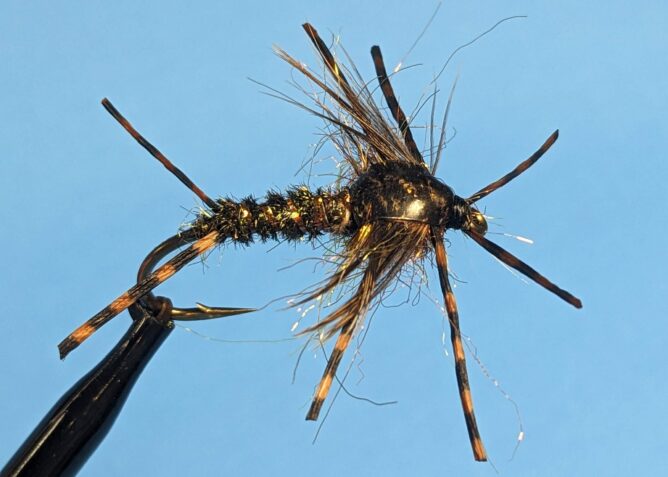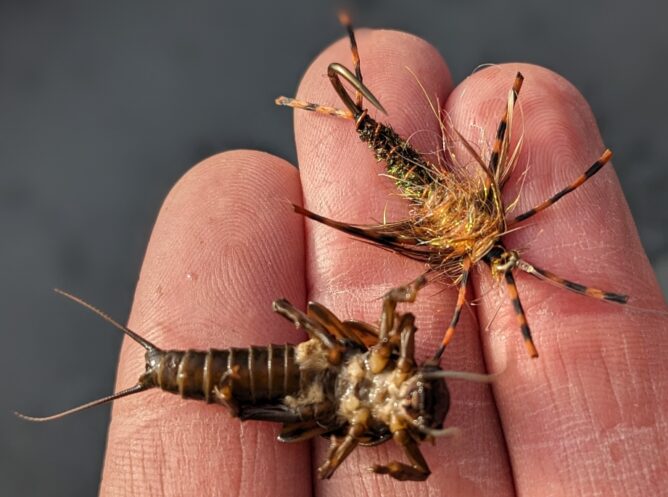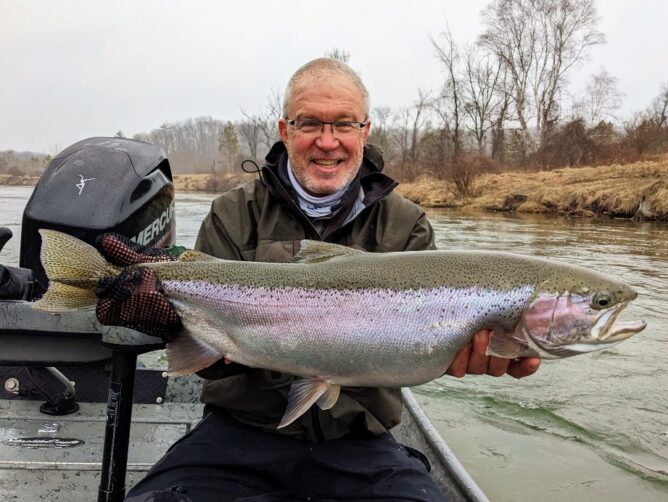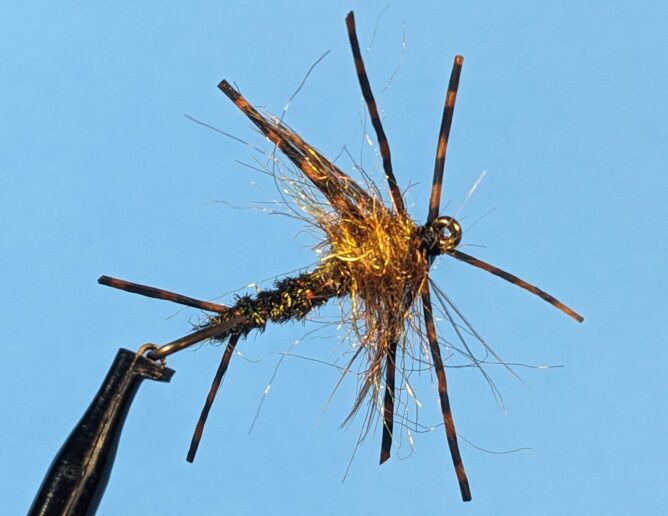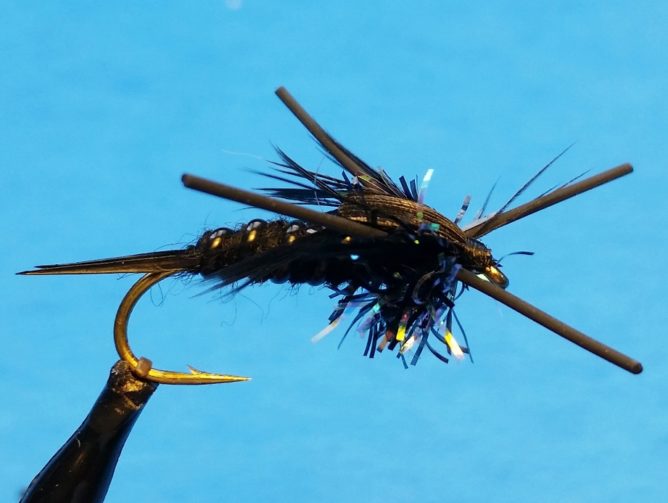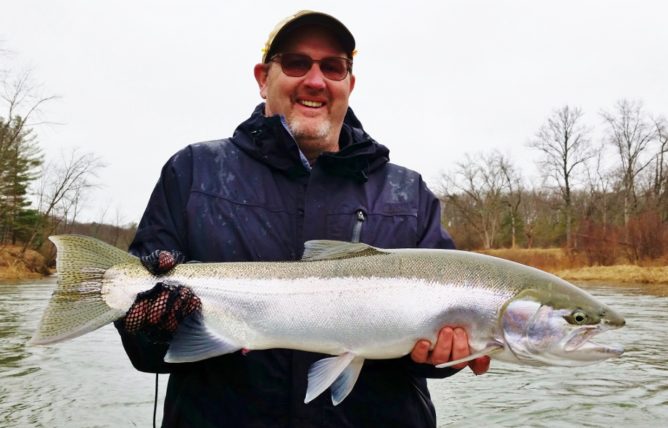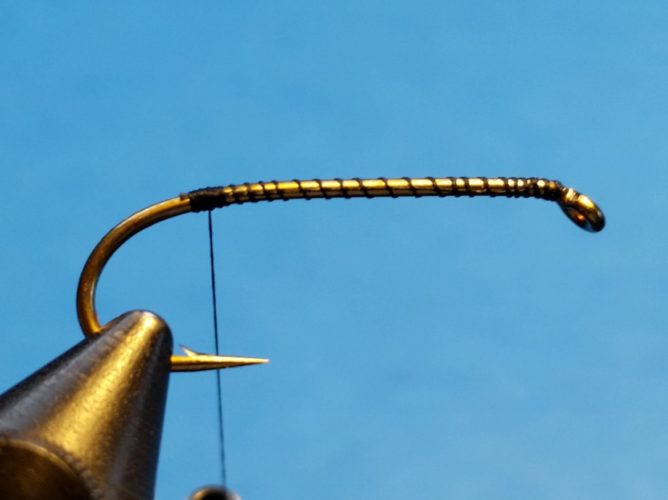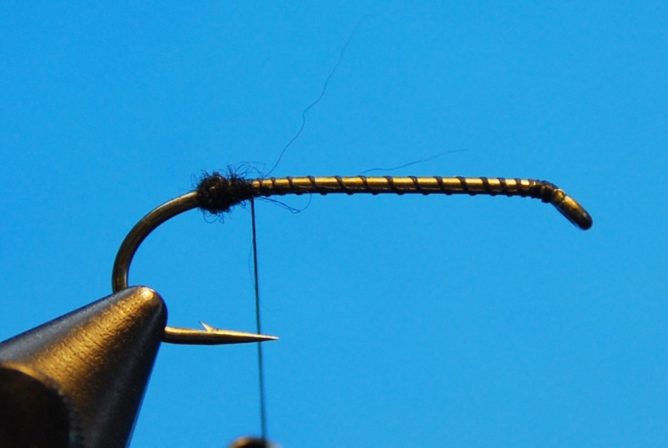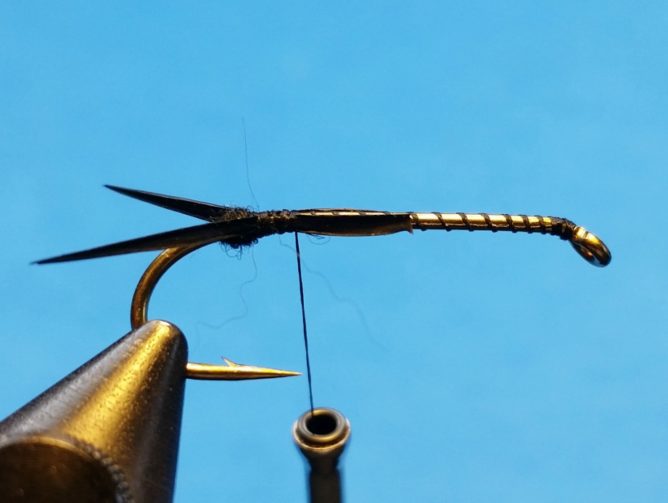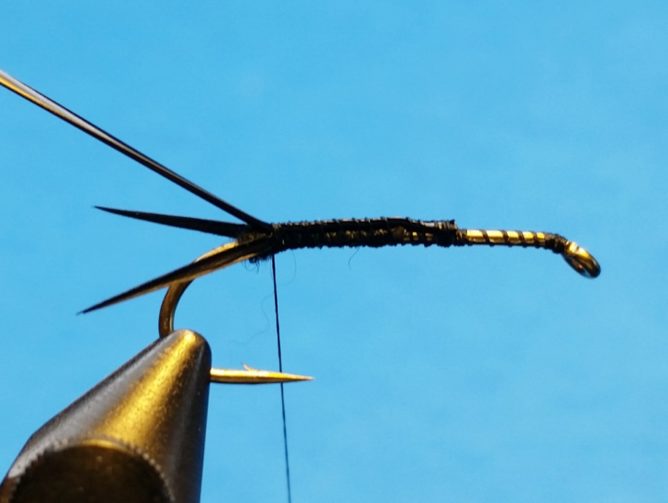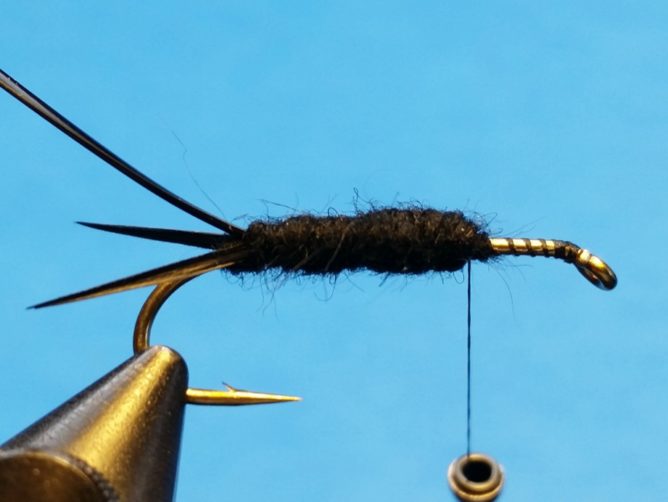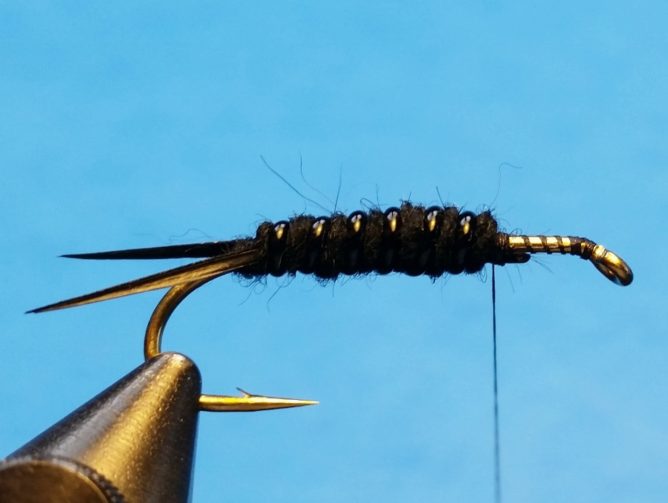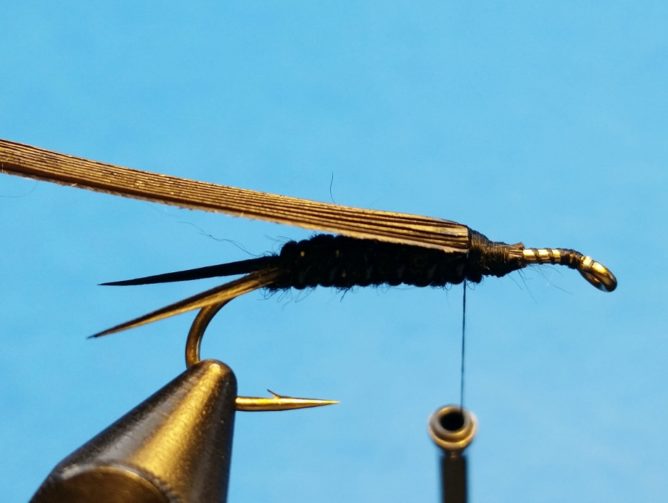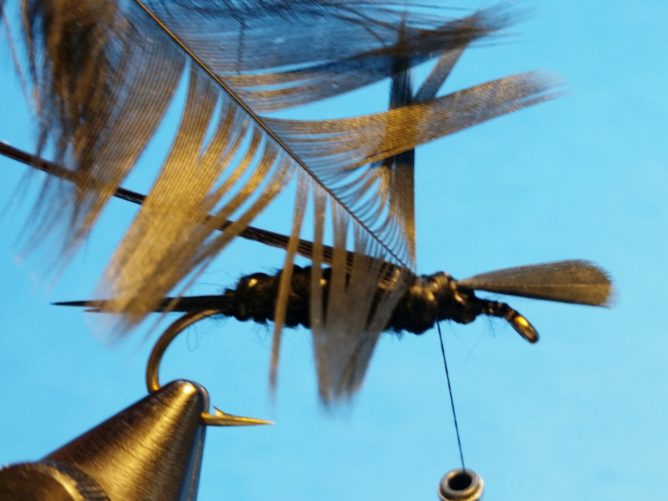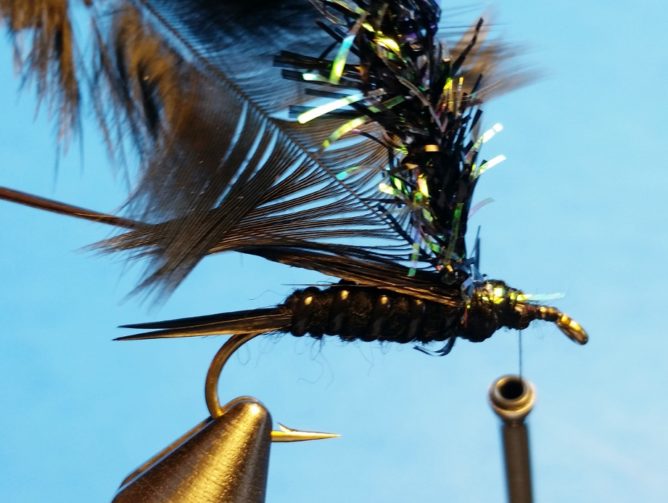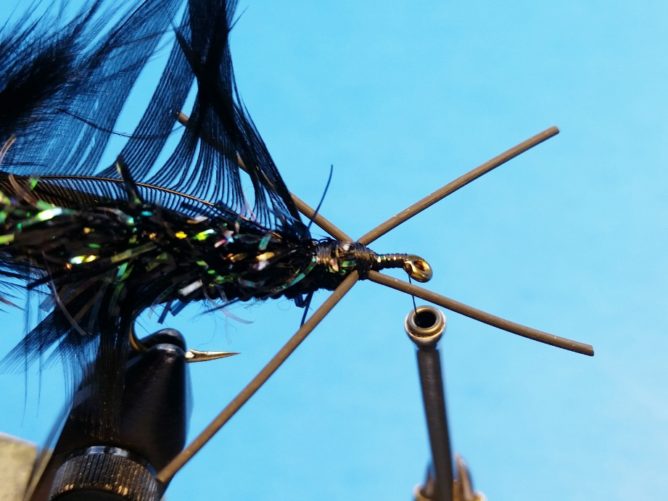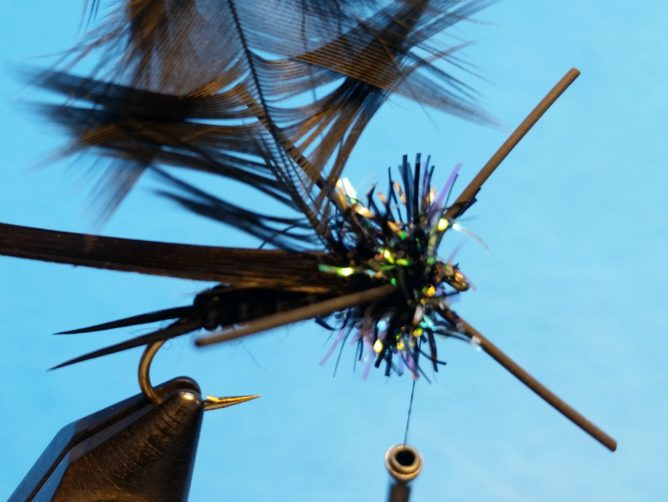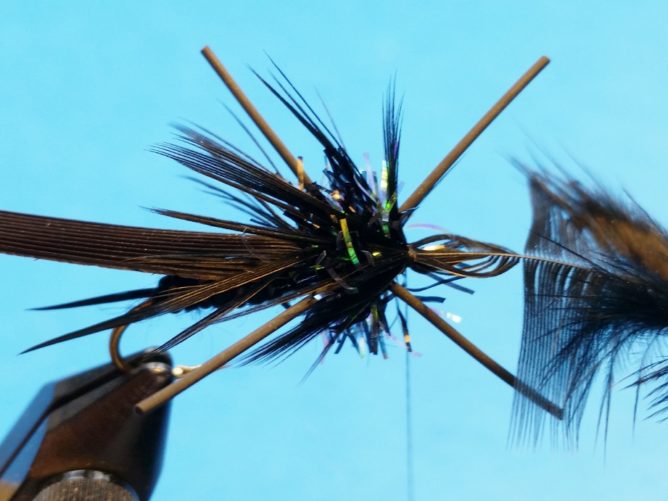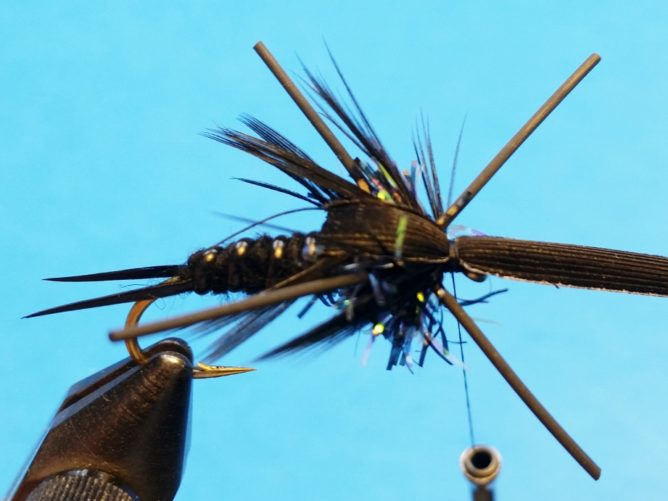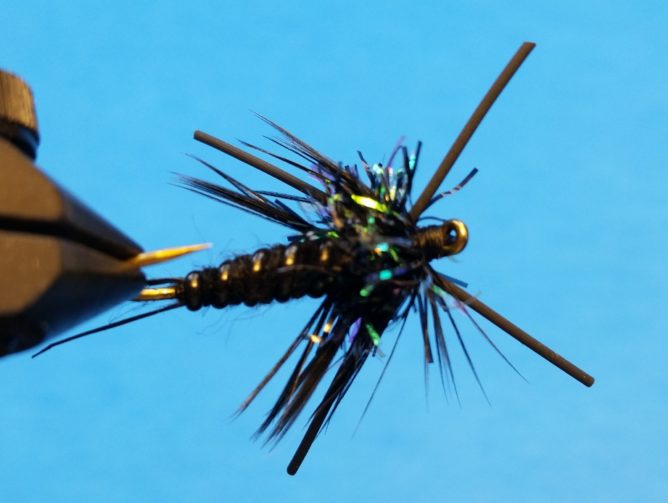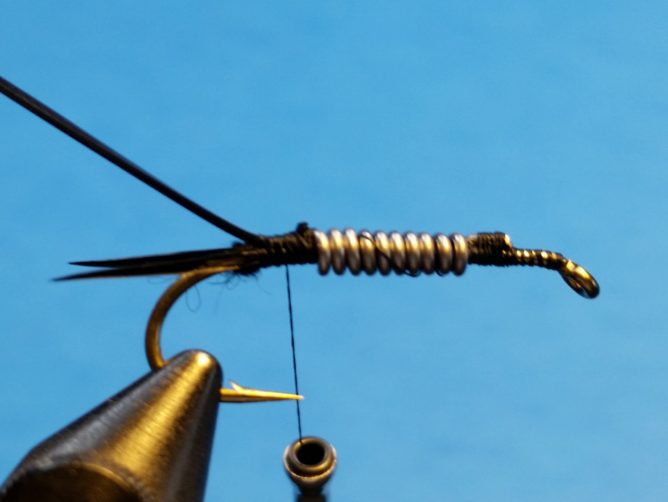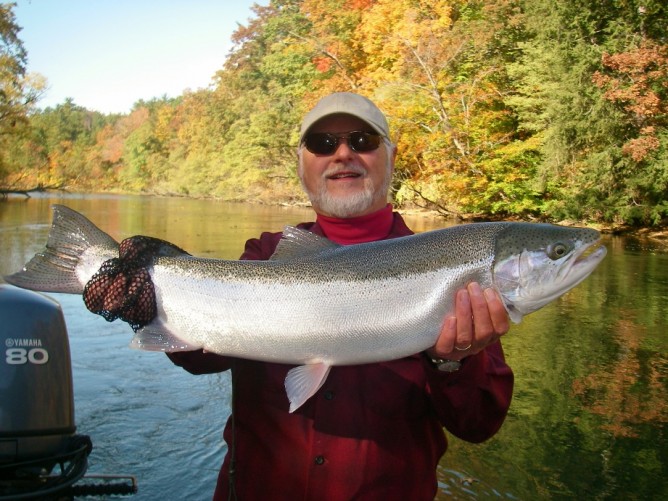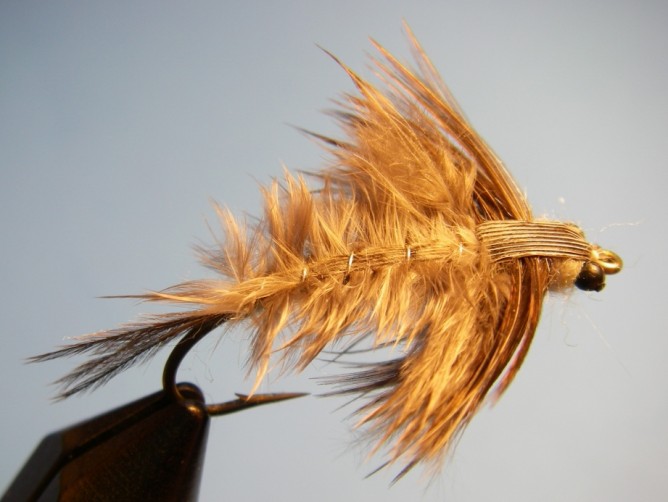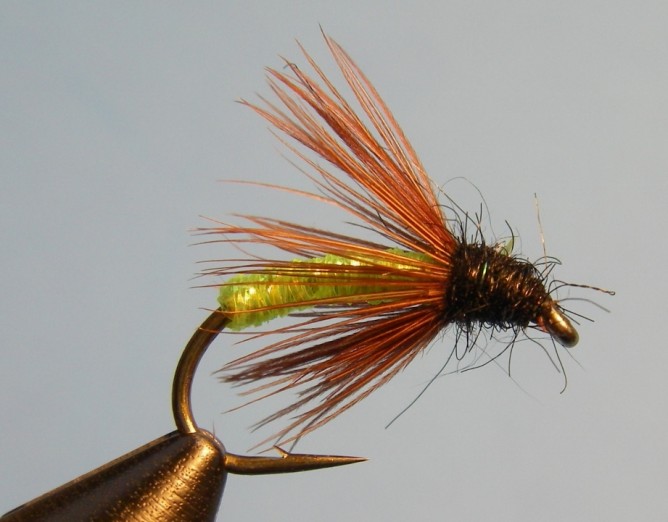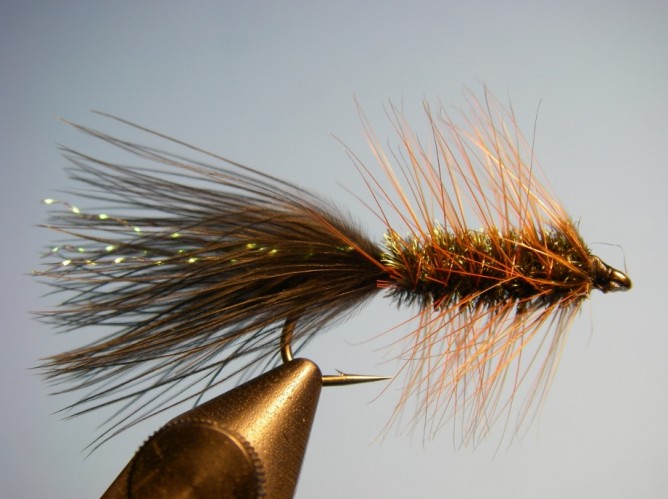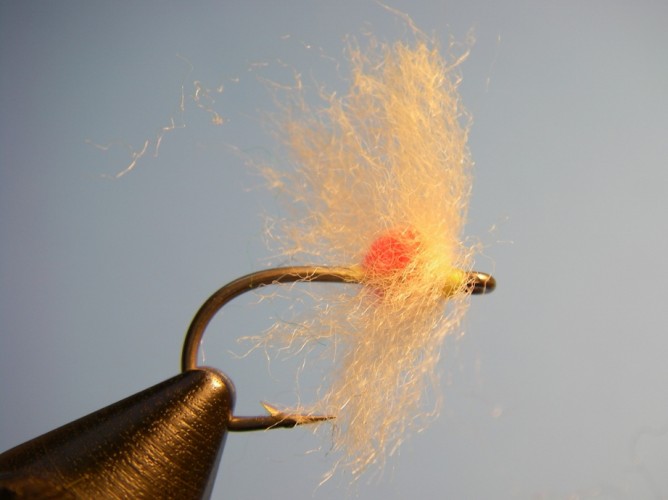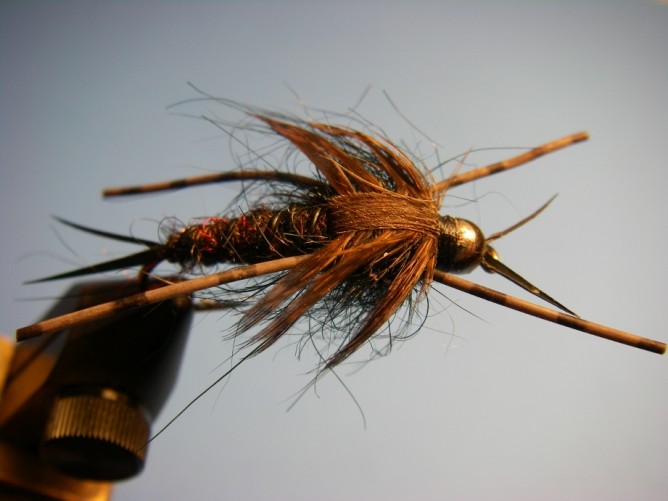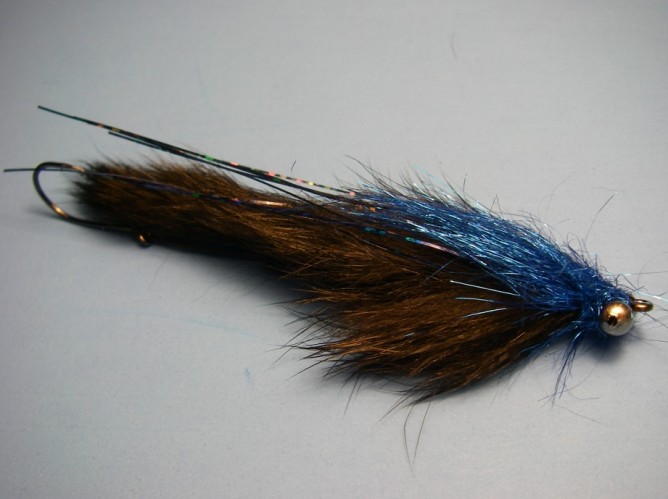Large stoneflies are common throughout our local rivers, just not of the same density found in most western rivers. That said, the nymphs are large, and their alien-like appearance gets noticed by fish – particularly steelhead, but don’t dismiss them for trout.
In late winter stonefly nymphs get active, which could simply be the result of getting flushed downstream as river flows increase with seasonal runoff. Later in mid-fall once the leaves have fallen off the trees, sees another round of activity as the nymphs chomp on decaying leaves making the Twenty Inch Chubby a fly to use during both spring and fall steelhead seasons.
Trout fisherman here in the Midwest and out west will find this pattern effective, especially in June when they are most active, crawling out of the river to emerge into adults.
If fishing them for trout, you can alternatively wrap a lead underbody in the middle of the hook shank.
The Twenty Inch Chubby blends elements of two great stonefly nymph patterns that have been around and catching fish for years – Ed Engle’s Twenty Incher and Hogan Brown’s Chubby Cousin. The rubber legs give movement and add to the profile, while the lighter thorax region exaggerates the difference between it and the abdomen. Lastly, peacock always seems to offer that natural iridescence that looks good in the vise, fly box and water. It looks best in a fish’s mouth.
Recipe
Hook: Daichi 1720 #6
Thread: Uni 6/0 – Black
Tail: Barred Sexi-Floss Copper Medium
Dubbing: AZ Synthetic Peacock Dubbing
Abdomen: Peacock Herl
Rib: Holographic Flashabou – Copper
Wingcase: Thin Skin – Mottled Bustard Natural
Legs: Barred Sexi-Floss Copper Medium
Thorax: Senyo’s Fusion Dub – Tobacco
Antennae: Barred Sexi-Floss Copper Medium
Tying Instructions
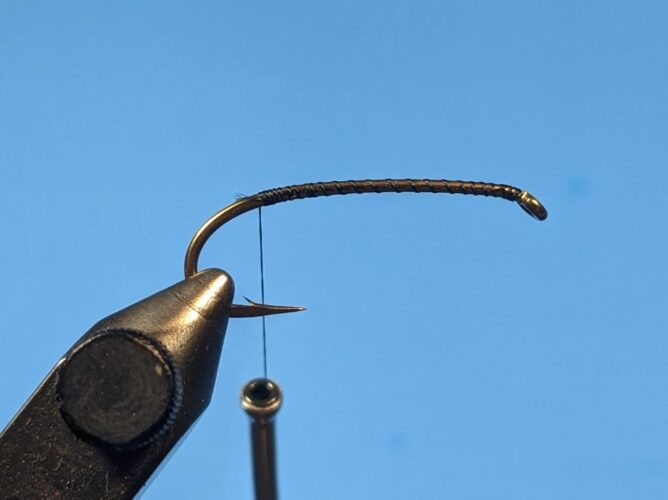 Step 1. Place hook in vice and wrap a thread base from behind the eye above the hook point and barb.
Step 1. Place hook in vice and wrap a thread base from behind the eye above the hook point and barb.
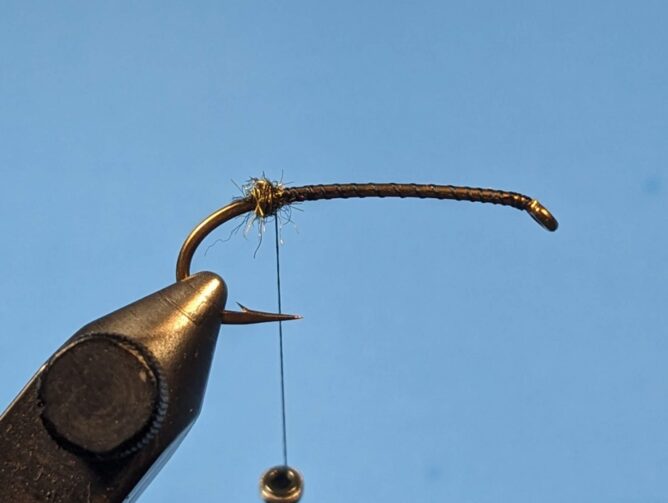 Step 2. Dub a very small amount of the peacock dubbing.
Step 2. Dub a very small amount of the peacock dubbing.
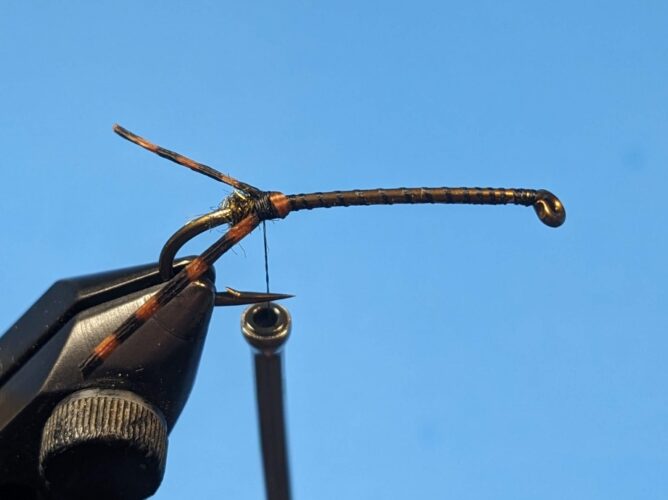 Step 3. Tie in the tail along the shank and up against the dubbing ball on both sides to help splay the material.
Step 3. Tie in the tail along the shank and up against the dubbing ball on both sides to help splay the material.
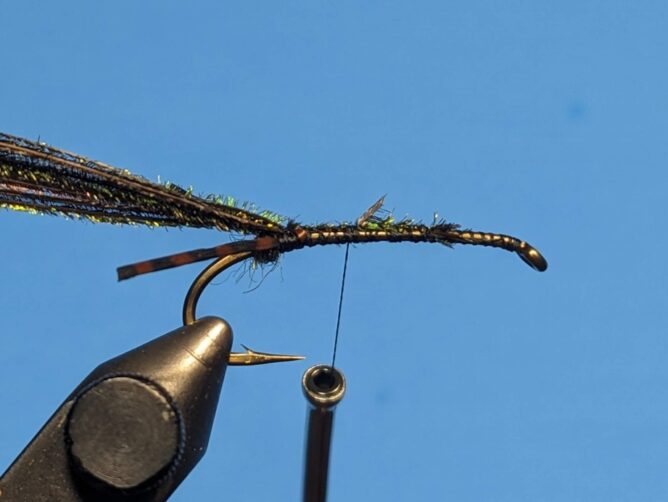 Step 4. Tie 7-9 strands of peacock herl by the tip and wrap down to the tail tie in.
Step 4. Tie 7-9 strands of peacock herl by the tip and wrap down to the tail tie in.
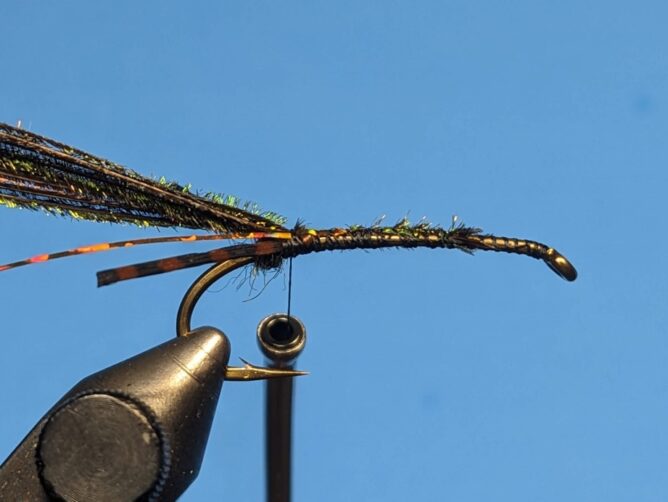 Step 5. Tie in the ribbing like you did the peacock.
Step 5. Tie in the ribbing like you did the peacock.
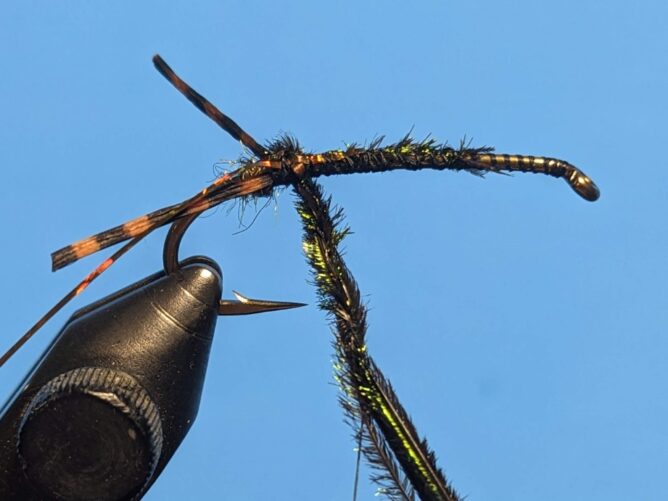
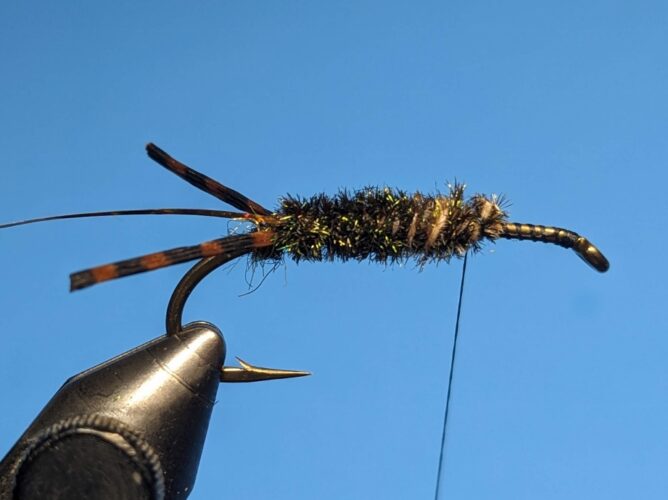 Step 6. Wrap the herl around the thread to strengthen it.
Step 6. Wrap the herl around the thread to strengthen it.
Then, wind it forward stopping about a hook gape’s distance from the hook eye.
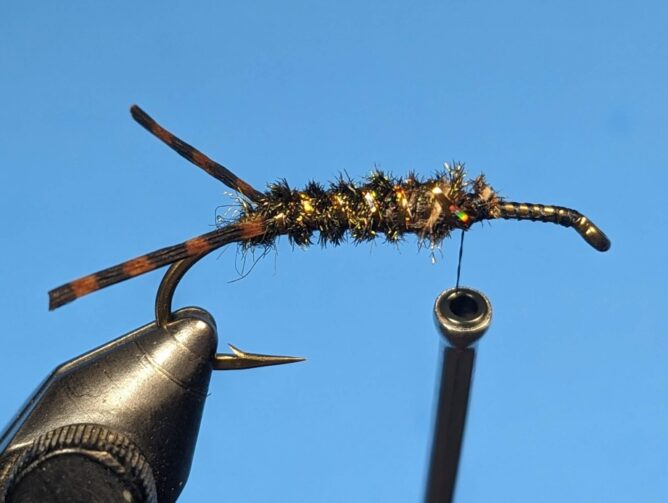 Step 7. Wrap the rib in the opposite direction that you wound the peacock.
Step 7. Wrap the rib in the opposite direction that you wound the peacock.
Be careful not to pull too hard and stretch/thin the flashabou.
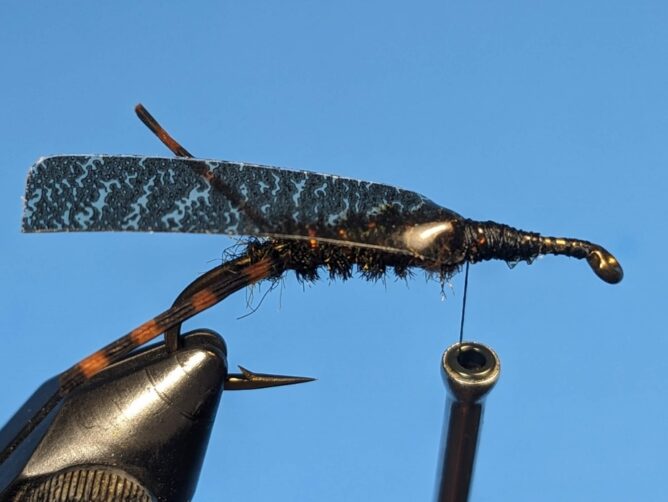 Step 8. Cut a strip of Thin Skin about 3/16-1/4” wide and tie in at thorax area.
Step 8. Cut a strip of Thin Skin about 3/16-1/4” wide and tie in at thorax area.
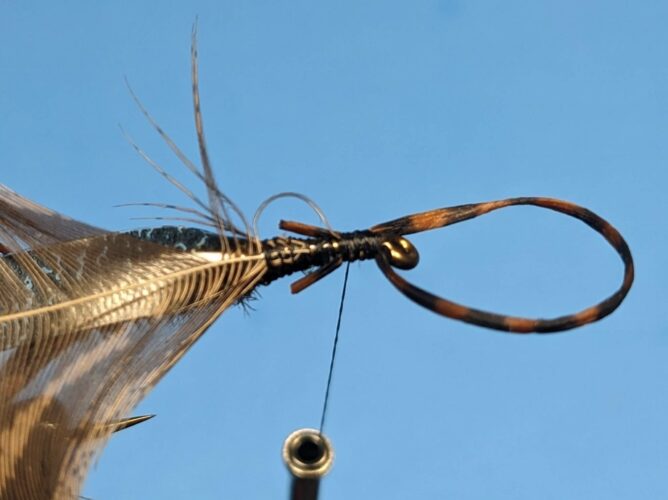 Step 9. Tie in a Hen Saddle or Grouse Feather by the tip and upside down on top of the Thin Skin tie in. Then, tie in the antenna on each side of the shank forming a forward facing loop that extends beyond the hook eye.
Step 9. Tie in a Hen Saddle or Grouse Feather by the tip and upside down on top of the Thin Skin tie in. Then, tie in the antenna on each side of the shank forming a forward facing loop that extends beyond the hook eye.
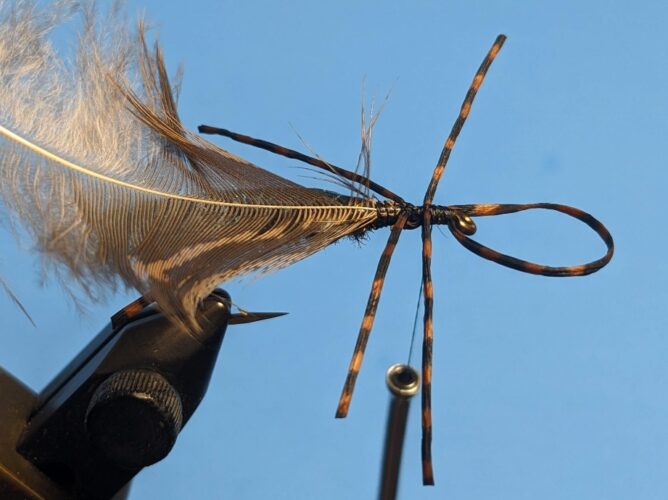 Step 10. Tie in two strands of leg material – perpendicular to the shank and evenly spaced apart.
Step 10. Tie in two strands of leg material – perpendicular to the shank and evenly spaced apart.
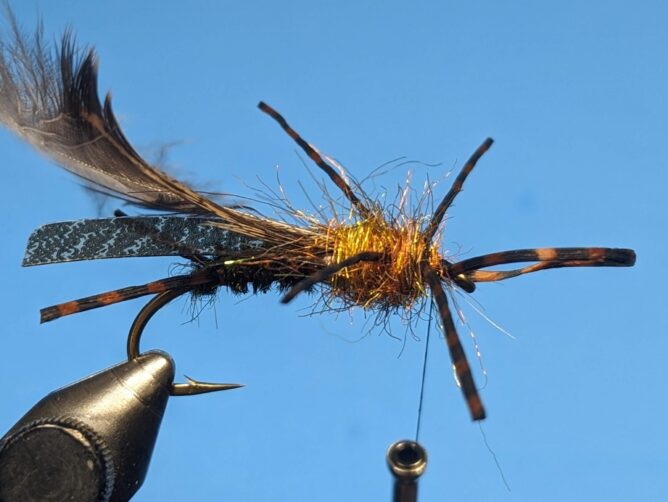 Step 11. Dub the thorax area which will help you position the legs where you want them.
Step 11. Dub the thorax area which will help you position the legs where you want them.
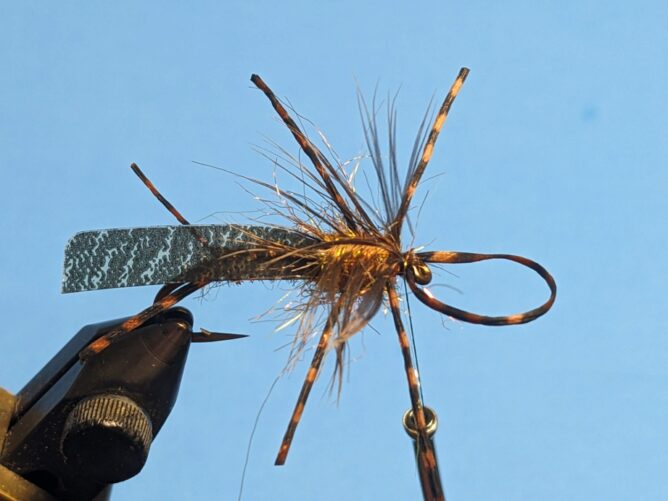 Step 12. Pull the feather over the thorax and tie off.
Step 12. Pull the feather over the thorax and tie off.
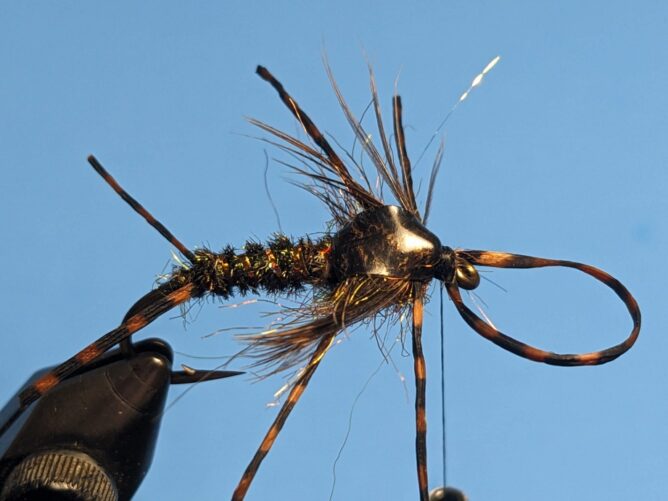 Step 13. Pull the Thin Skin over the thorax to create the wingcase.
Step 13. Pull the Thin Skin over the thorax to create the wingcase.
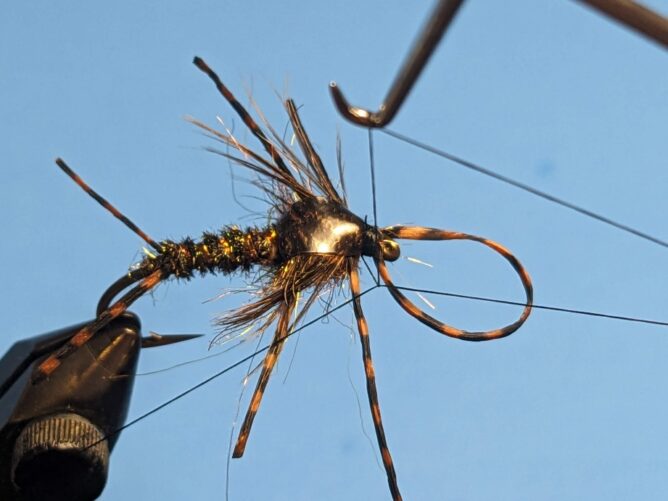 Step 14. Whip Finish the thread.
Step 14. Whip Finish the thread.
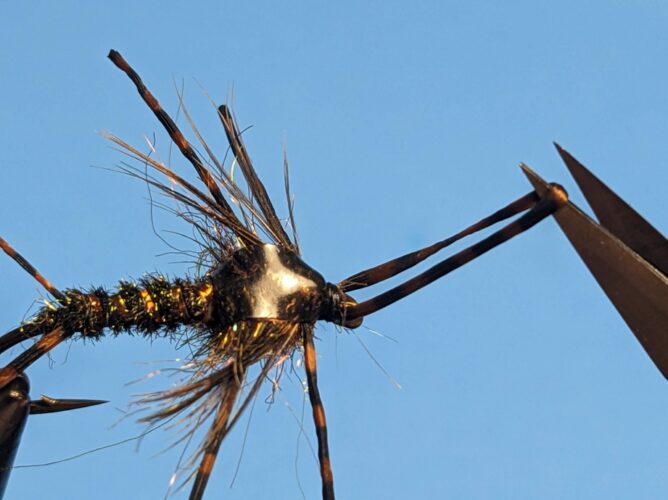 Step 15. Cut the loop of Sexi-Floss to create antennas and trim to the even and appropriate size.
Step 15. Cut the loop of Sexi-Floss to create antennas and trim to the even and appropriate size.
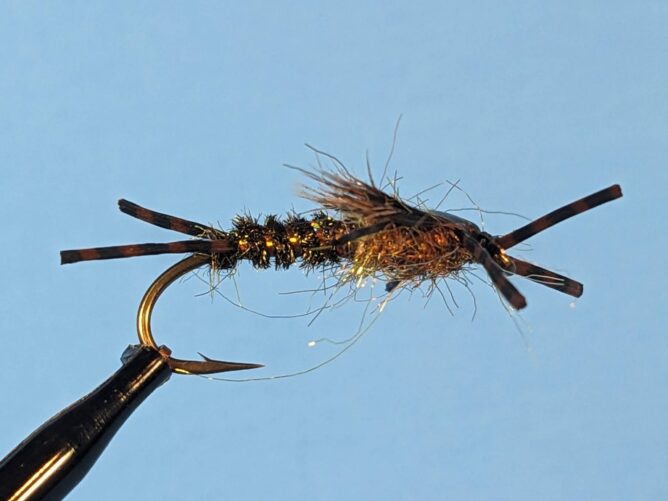 Twenty Inch Chubby Side Profile
Twenty Inch Chubby Side Profile

